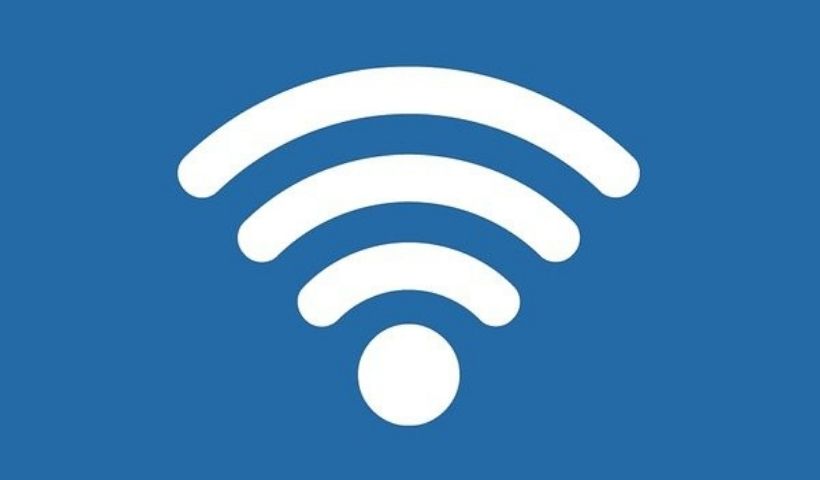Tips To Improve The Wi-fi Signal

There are more elements involved, and to get around them, nothing like making a map of the strength of the Wi-Fi signal in our home. Surely, if we measure the signal just a few meters from the router antenna, we will see that the width decreases considerably compared to when we do it a few centimeters away.
To map the house we can do the test with a mobile to which we have installed an application such as Speedtest , available for both Android and iOS . If we open the application from the mobile and click on ‘Start the test’ next to the antenna we will obtain a result, let’s put 60 mbps of the theoretical 600 mbps. Then we move away a few meters and even go into another room, and we do the test again: the result can be 30 mbps.
If we go to the kitchen, next to the refrigerator or the smoke extractor, we will verify that the intensity drops to about 15 mbps. If there is a metal sink involved and we put the mobile inside to do the test, we will be surprised that the result will plummet to about seven “megabytes”. What’s more, if we turn on the microwave at the same time, it may not reach a single mbps even though the kitchen is a few meters from the router.
To have a reference point of what would be optimal, we will do the test from a computer that has the network cable connected . In the case of fiber, we will see that we have all the contracted power. In the case of ADSL there may be a 10% loss, but no more.
Table of Contents
Why Is This Happening?
The Wi-Fi signal is affected in a house by an environment full of electromagnetic obstacles of all kinds and also in competition with other electromagnetic waves that live in the area. Two examples: microwave ovens and old cordless phones, which work at 2.45 Ghz, surely interfering with our Wi-Fi signal. Hence the intensity drops in our signal map.
Also certain remote controls, devices that work with Bluetooth and are permanently connected, and even massive data transmission systems such as ChromeCast or AirPlay, can interfere with Wi-Fi. If to make matters worse we find ourselves in the urban center of a city , where we can coincide with hundreds of signs from the street, neighbors or nearby offices, we must accept that in our house the wifis are not comfortable. Consequently, we will resign ourselves to optimizing the intensity as much as possible.
Solutions To Adopt
The Place In The House Where We Place The Router Is Important
If the router is at one end of a house with an elongated distribution and a central corridor, as Bruno surely does, it should not surprise us that at the opposite end there is hardly any signal. If, in addition, between the router and the point where we want to receive the average signal the kitchen , with all the metallic surface appliances, the wifi will suffer a very important drop because it will bounce.
Therefore, whenever possible, we must place the router in a central point of the house, away from the kitchen and appliances that emit waves. In Bruno’s case, perhaps a good idea would be to buy a very long Ethernet cable and take the router with him to the office during the day, and connect it to a shorter one in the living room at night.
Run Away From Windows, Load-Bearing Walls Or Boundary Partitions
We may be giving away 50% of our Wi-Fi signal to the neighbor simply because we have the router next to a window or an outside wall. The simplest solution is to move the device further into the house. A home remedy, if we cannot move the device, is to place an aluminum foil film behind the antenna, which will protect us from external waves and redirect all the flow that we initially lost.
The Higher The Better
Due to the spherical configuration of the waves, if the router is in a low part of our home, it will run into numerous obstacles and will yield much of the signal to the floor of the neighbor below. It is therefore necessary to place it in a high area, so that it avoids obstacles and reaches us better to all corners.
Also Read : All You Need To Know About NFC Technology
Change The Serial Router For A Dual One
A dual router is one that works in the 802.11n standard, and therefore is capable of broadcasting in the 2.4 Ghz or 5 Ghz frequency, which is the one used by professional routers, which is much less saturated and is not interfered with by emissions from household appliances. Most of the new clients of the access providers have them, but the old ones can still be installed at 2.5 Ghz . Dual routers are available on Amazon for less than $ 200 and are fairly easy to set up.
Use PLC Sockets
The best alternative when there is no way to move the router from the site where it was installed is to buy a PLC plug system.
This system is based on the transmission of the internet through the domestic electrical wiring, so that there is a main plug that is connected by Ethernet to the router and another or others that we can plug in different parts of the house. When activated, the network flow will go to where they are, which will then emit it in the form of a new Wi-Fi signal.
Again, they can be bought on Amazon for less than 100$ and they are really effective, as well as easy to install.
Also Read : What Is And How Does An Autonomous Car Work?






